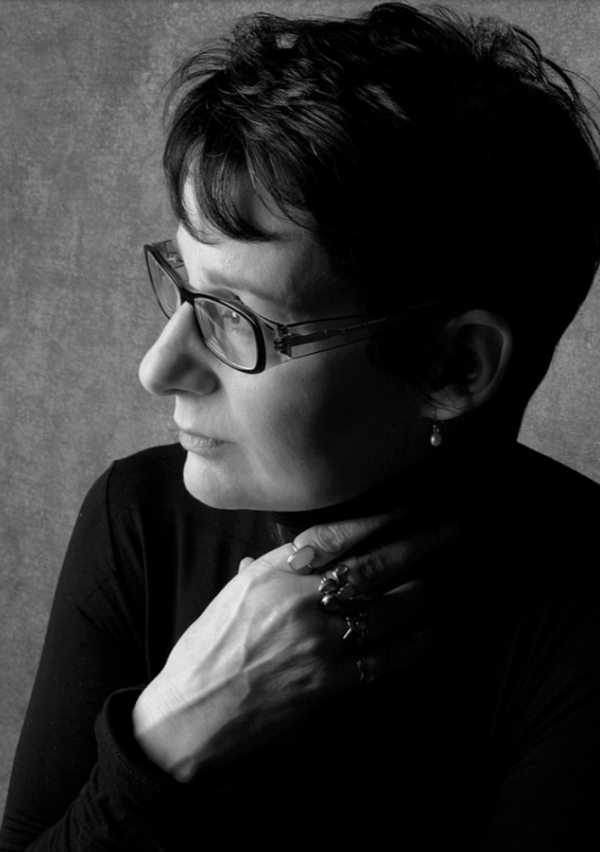
Recognition
2009 AIGA Medal
Born
1953, New York, New York
Deceased
2023
By Julie Lasky
August 2, 2009
Recognized for her exquisite ability to join intelligence, craft, and evocative imagery and for her enduring commitment to design education.
An unwritten rule in design is to never judge designers by the work they do for themselves. Released from a client's demands, they become over-oxygenated. No one is hanging around shaking a head or wagging a finger. They go crazy with the freedom.
Thousands of misconceived designer business cards have entered the world this way, and more than a few designer monographs. But freedom in the right hands can yield treasures. Take the invitation Carin Goldberg designed in 2003 for a New Year's party at her home. Clumsily hand-lettered with crossed-out words, the messy-looking piece doesn't just name a time and place but tells the story of Goldberg's life from the point of meeting her husband, the architect James Biber, through the birth of their son, Julian, to their relocation to a Brooklyn townhouse that finally gave them space to be properly, expansively social.
What this invitation says about Goldberg is that she is warm, charming, family oriented and house-proud. She goes out of her way to design with words even when she doesn't have to, and she uses them killingly. This is someone who reproduced the addresses, in label-maker type, of every residence she ever occupied to create a collage in the shape of a key for the inaugural cover of a New York Times real-estate supplement. Someone who summed up Thomas Hardy's entire career in a New York Times Book Review illustration with just two dates and three overlapping job titles: Poet, Novelist, Architect.
What the New Year's invitation does not say about Goldberg is that she's a meticulous and elegant craftsperson, too; while working at CBS Television and Records in the late 1970s, she learned to wield an X-Acto blade like a scalpel so she could kern 9-point type with a brain surgeon's precision. Her literary endeavors range from reviews to book covers—hundreds of expressive, witty jewels designed for nearly every publishing company in existence, from glamour houses like Simon & Schuster, Random House, Alfred A. Knopf, Hyperion and Doubleday to modest university presses. She has a heart of gold but also a will of tungsten. She's a cultural omnivore—equally at home with high art and pop music—although two names she never wants to hear again are James Joyce and Madonna (more about that later).
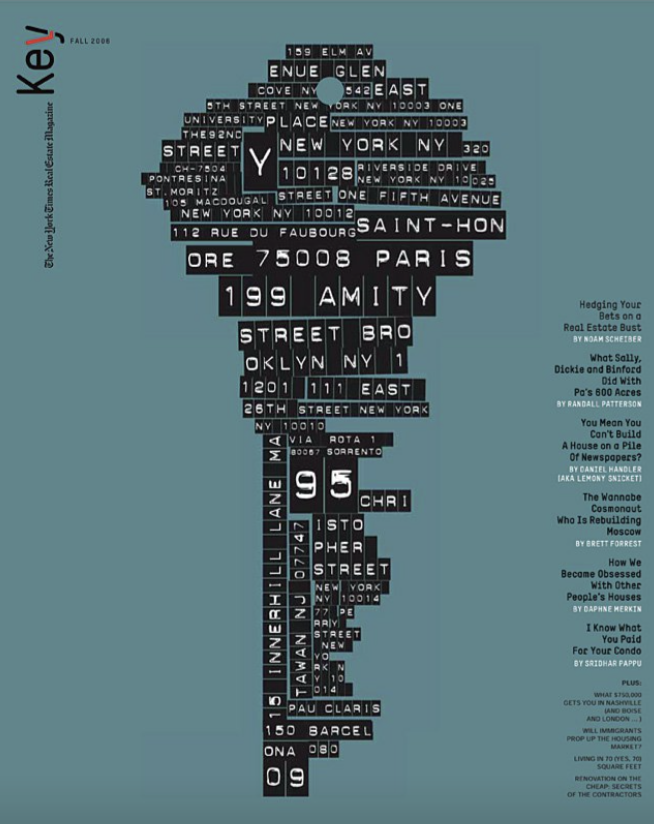
Key, The New York Times Real Estate Magazine cover, 2006. Design firm: The New York Times Magazine; creative director: Janet Froelich; art directors: Dirk Barnett, Arem Duplessis; illustrator: Carin Goldberg; editor: Gerry Marzorati; client: Key Magazine

Madonna album cover, 1982. Designer: Carin Goldberg; photograph by Gary Heery; Client: Warner Bros.
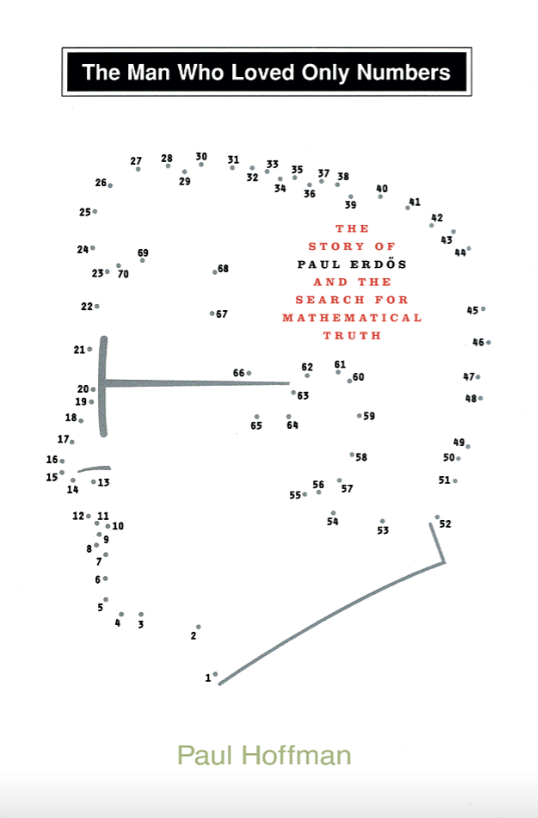
The Man Who Loved Only Numbers book design, 1998. Design firm: Carin Goldberg Design; art directors: Carin Goldberg, Victor Weaver; graphic designer: Carin Goldberg; illustrator: Neil Flewellen; Author: Paul Hoffman; publisher/client: Hyperion Books
“I struggle with the desire to be a populist and an elitist, an intellect and an entertainer,” she confided to Sean Adams in a 2007 interview for STEP magazine. She doesn't take anything—skill, determination, luck, genes, friends or the battles women have waged to acquire their own multiple, overlapping job titles (designer, wife, mother)—for granted.
Goldberg was born in New York in 1953, the daughter of a nature-loving clothier father and a housewife with a lively aesthetic streak. (She remembers her mother wrapping a gift for a grade-school teacher in kraft paper and fresh lilacs.) Her father, the rare Brooklyn Jew to graduate from Penn State University with a degree in forestry, reluctantly entered his father's business selling evening gowns. In the early 1960s, not long after he moved the family from the well-heeled suburb of Glen Cove, Long Island, to Strathmore-at-Matawan, a New Jersey housing development built by William Levitt of Levittown fame, the business went bankrupt, as corsages gave way to flower power.
She enrolled at Cooper Union to study painting and graduated in 1975 with two invaluable resources for a design career. One was Marilyn Hoffner, the school's director of alumni relations. Hoffner urged Goldberg to call the Cooper alumnus Lou Dorfsman at CBS, though Carin had nothing remotely approaching a design portfolio. Dorfsman had been sketching logos for the Museum of Broadcasting and told Goldberg to “work 'em up.” “I didn't know what he meant,” she recalls. She was left to work at a desk on a nearly empty office floor where, “by a stroke of luck,” a freelance hand-letterer with “hands of gold” showed her how to draw ligatures, use a stat machine and master the ruling pen. Goldberg worked day and night for more than a week and ended with a stack of logotypes of every conceivable configuration. When she presented them to Dorfsman, he grunted his approval and led her to the bustling art department to begin her job as a junior designer. “It was like entering Grand Central Station after being holed up in bunker,” she says. “I passed the test and was escorted to Oz.”

“Ellipsis (Life...Death)” poster for Punct’d limited edition silkscreen series, sponsored by Neenah Paper, 2004. Carin Goldberg
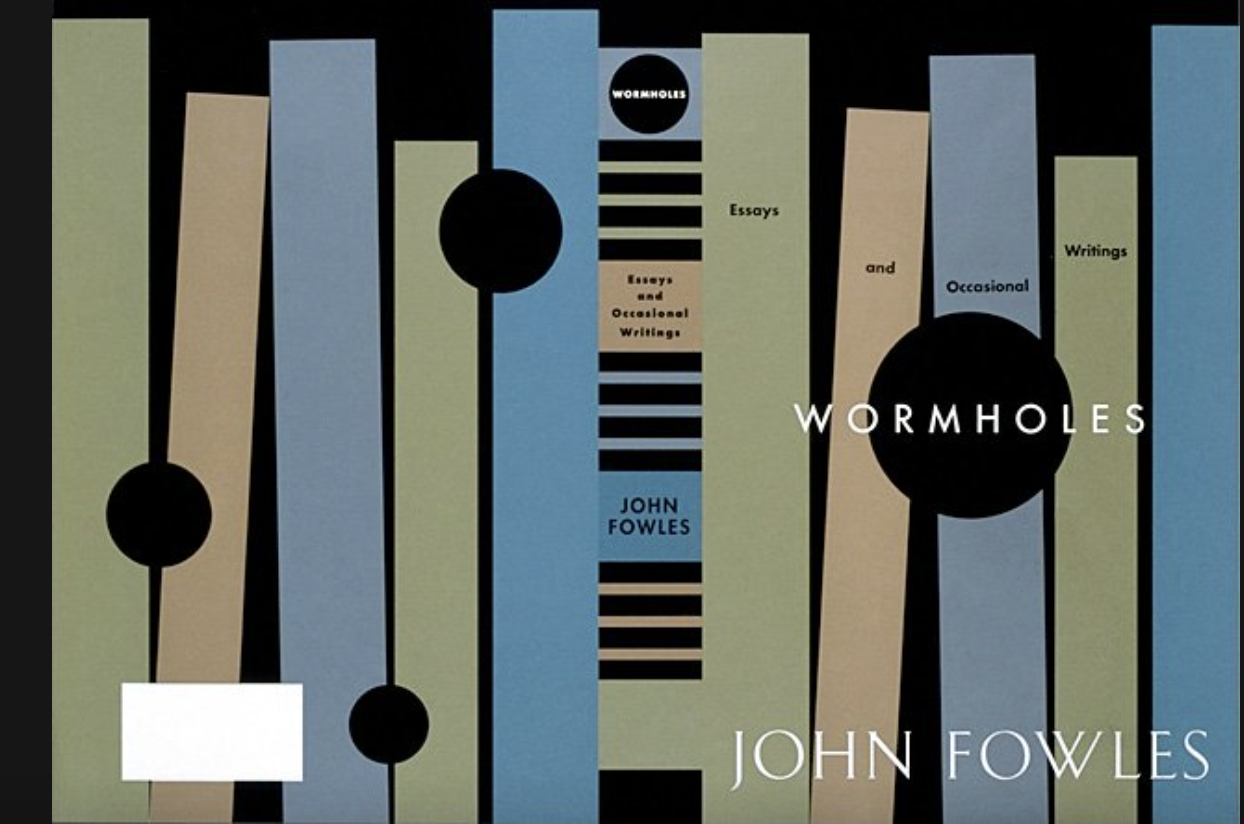
Wormholes book cover (image of front, back and spine), 1997. Design firm: Carin Goldberg Design; art directors: Carin Goldberg, Steve Snyder; graphic designer: Carin Goldberg; author: John Fowles; publisher/client: Little, Brown and Company
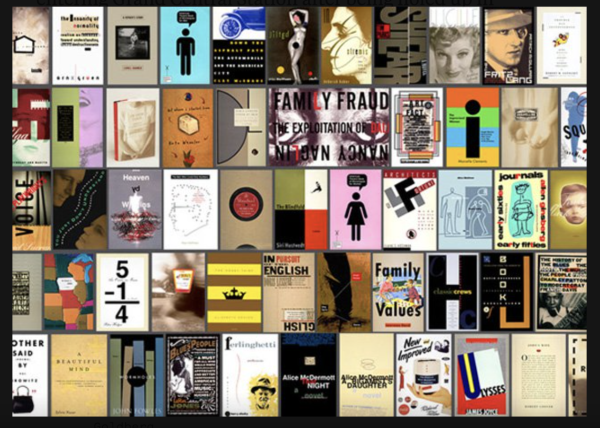
Various book covers and jackets, 1982–1998. Carin Goldberg
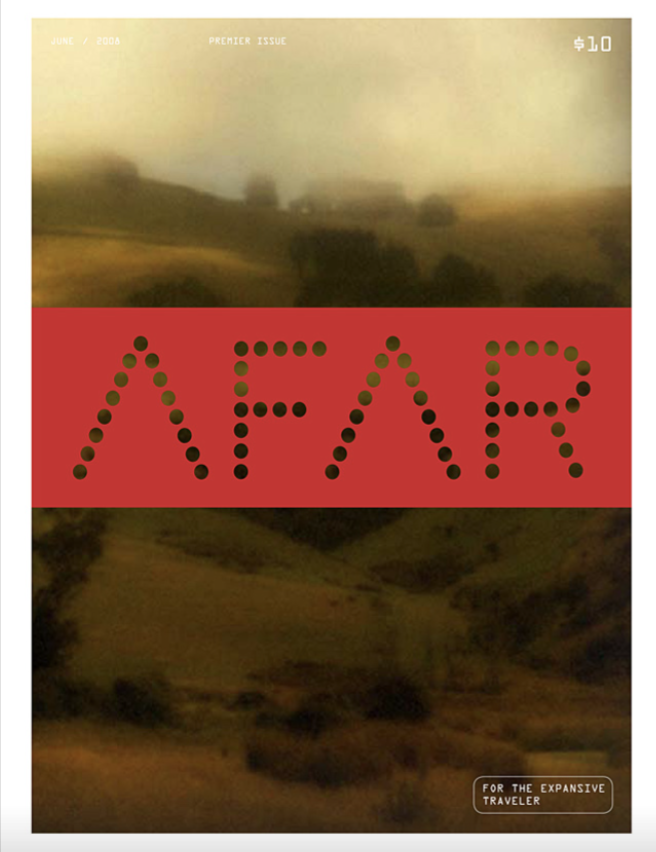
AFAR Magazine unpublished proposal, 2008. Carin Goldberg
Goldberg's second resource was more than just that: Gene Greif, a Cooper Union classmate who was also a visionary force—“We were each other's muse,” she says. After she got bored of laboring over CBS ads for TV Guide and did a brief, misjudged stint at a pharmaceutical agency, she joined Greif at CBS Records, where he was working with Paula Scher, Henrietta Condak and John Berg on album packages, and where Goldberg began designing advertising. Several years later—after Goldberg had held jobs at Atlantic Records, in CBS's classical division and at Mademoiselle magazine—she and Greif shared a series of Manhattan studio spaces. By that time, Greif had switched to illustrating, and the two collaborated on a number of projects, including the celebrated cover for Raymond Carver's Where Water Comes Together with Other Water (1986). “The years when I was working with Gene—from around 1982 to 1991—were probably the most creatively satisfying and fertile of my life,” Goldberg says.
She opened her own studio in 1982 and was in business less than a year when she was commissioned by Warner Bros. Records to design the debut album for a young singer called Madonna. She has never stopped fielding questions about it. Even more notorious was her 1986 cover for an edition of James Joyce's Ulysses. Instructed by Vintage Books' art director Judith Loeser to pay tribute to E. McKnight Kauffer's 1949 Random House cover of Ulysses by emphasizing the “U” in the title, Goldberg took inspiration from a 1928 exhibition poster by the German designer Paul Renner. She set the headline on a diagonal in Renner's Futura Bold and filled the bowl of the “U” in yellow.
Ulysses placed Goldberg firmly in the 1980s culture wars, at least those being fought over appropriation. In his 1989 essay “The Women Who Saved New York!” Philip Meggs praised the foursome of Goldberg, Paula Scher, Louise Fili and Lorraine Louie for enlivening contemporary design with neglected historical styles, going so far as to credit them with “saving” New York from being overshadowed by burgeoning design movements in Dallas, Minneapolis and San Francisco. At the same time, Goldberg was vilified for senselessly pilfering the past. Tibor Kalman—in “Good History/Bad History,” a 1991 Print magazine essay co-written with J. Abbott Miller and Karrie Jacobs—charged Goldberg with practicing “jive modernism.” Fourteen years later, no less than John Updike weighed in on the fracas in a New Yorker magazine review of By Its Cover: Modern American Book Cover Design, which presented Goldberg's Ulysses design along with previous editions. (Updike found Goldberg's typography “bold and festive.”)
Goldberg is as good a performer as any, but she'd rather bundle up her extroverted energies and invest them into her creations. “The only work I ever wanted to do is visible work,” she says. “Record covers, book jackets, magazines . . . because a record store or a magazine stand is like having a gallery space.”
Since 1983, Goldberg's most comfortable stage has been the classroom; she's taught graphic design at the School of Visual Arts to thousands of aspiring professionals. Women's lib notwithstanding, her female students are hardly beyond struggle, she points out. The sexism of CBS's record department in the late 1970s, when drug-fueled hedonism was confused with liberation, has been muffled. But the majority of women still must work punishing hours to be first-rate professionals, spouses and parents.
Goldberg's unwillingness to shrug off such constraints led Meggs to write a postscript to his manuscript for “The Women Who Saved New York!” It began: “After completing my two-hour interview with Carin Goldberg, in connection with this article, I told her I had run out of questions. She looked me squarely in the eye and said, 'Don't you have any questions about the fact that this article is about women?'” Twenty years later, she remains unmoved by arguments that gender is irrelevant to one's professional identity. “Family and money dictate the life of the woman designer,” she says firmly. “And yes, there is very much such a thing as a woman designer. I don't see anything wrong with that. In fact, I embrace it.”